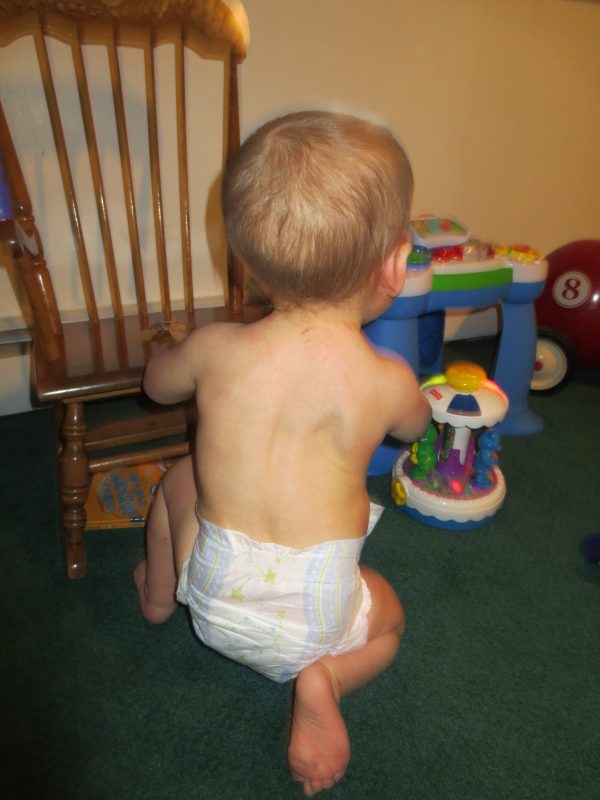
Max Stevens was diagnosed with infantile scoliosis when his mom noticed one of his shoulder blades stuck out. He is pictured here at 7 months old when he was being closely monitored for curve progression.
It takes a lot to rattle Michelle Stevens. The mom of 4 boys ages 14, 11, 10 and 8, two of whom have Fragile X syndrome, a genetic mutation that causes intellectual delays, is used to rolling with the punches. When her youngest son, Max, was 4 months old she wasn’t terribly concerned when she noticed one of his shoulder blades didn’t feel quite right.
“I brought it up to my pediatrician, Dr. Larry Handwork, who ordered an X-ray to check things out,” she said.
The X-ray showed baby Max had a spinal curve that indicated infantile scoliosis. The goal was a wait and see approach, but follow-up X-rays showed Max’s curve was continuing to progress. The Stevens family was referred to Akron Children’s Spine Program where a procedure called Mehta casting that helps straighten the spine and gradually reduce the size of the curve was recommended.
The hospital uses Mehta casting because it has a high rate of success at either curing infantile scoliosis or enabling significant curve correction – meaning surgery isn’t required at a young age.
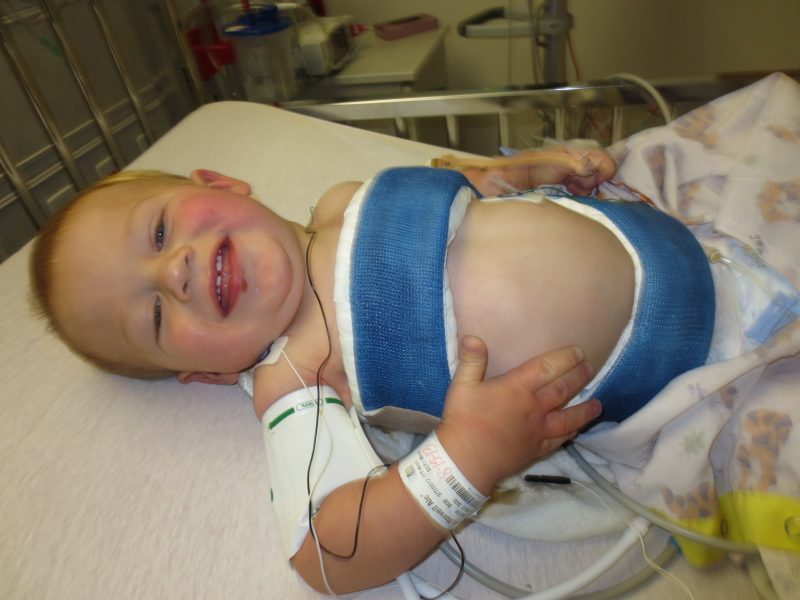
According to his mom, Max was a good-natured baby who never seemed to mind the casts. Here he is all smiles post-operative casting.
Beginning at 16 months of age, Max was casted every 6 weeks under general anesthesia. During the same day procedure, a cast was placed under his armpits to his hips with an opening over the abdomen. The opening allows room for breathing and eating. Since the cast was waterproof, Max could be bathed normally.
Akron Children’s is one of the first hospitals in the U.S. to use waterproof cast padding during serial Mehta cast therapy.
“Waterproof cast padding avoids significant skin problems and the associated need for breaks from casting that typically are required with traditional cotton padded Mehta casts,” said Max’s surgeon, Dr. Todd Ritzman.
“Max tolerated the casts really well,” said Michelle. “He couldn’t walk yet so it didn’t impede his movements. The biggest annoyance was Max’s eczema which caused itchiness under the cast that Max wanted to scratch.”
As he began crawling and learning to walk, the weight of the cast caused Max to have to work a little harder.
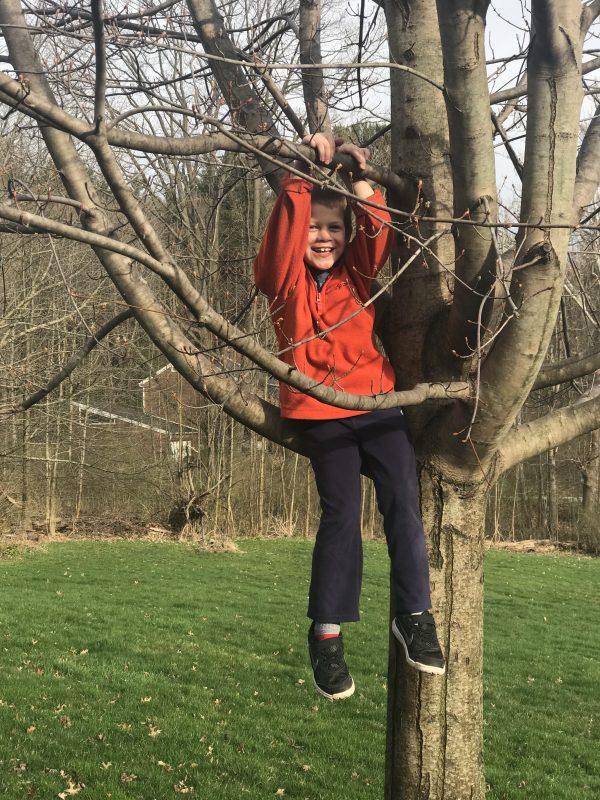
Post scoliosis treatment there is no stopping Max from being an active child. Climbing trees is a favorite activity.
“The cast weighs approximately 2 pounds,” said Dr. Ritzman. “Children are remarkably active and tolerant of the casts. We repeatedly see children function similar to their peers of the same age despite casting. In fact, we’ve treated 2 patients with normal childhood arm fractures they sustained while they were riding bikes in their Mehta casts.”
Michelle says Max was no stranger to wearing equipment – as a baby he wore a helmet for plagiocephaly (or flat head syndrome). He also was a frequent patient in the hospital’s infusion center for intravenous immune globulin (IVIG) antibody infusions to treat a low immune system.
“He was a trooper,” said Michelle. “He came in for his infusions at the same time he was undergoing his casting and bracing for scoliosis.”
Casts are changed according to the age and rate of growth of the patient. For Max, that meant every 6 weeks.
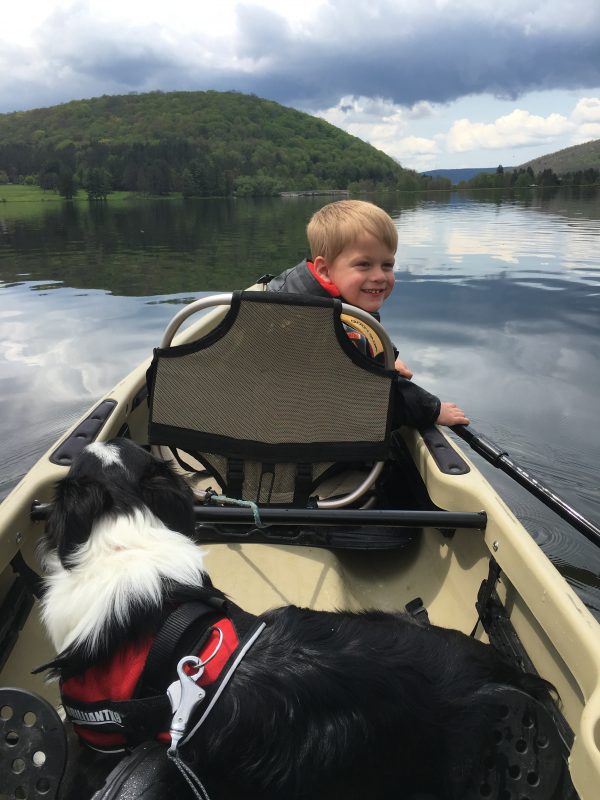
A Cub Scout, one of Max’s favorite things is canoeing with his dad and his dog, Jake.
After a year, Max was fitted by a prosthetist with a Boston brace that he could take on and off. He wore it over a t-shirt and under his clothes for another year.
“We typically transition from Mehta casts to a Boston underarm TLSO (Thoracic Lumbar Sacral Orthosis) brace after approximately one year in the casts,” said Dr. Ritzman. “Children are asked to wear these between 13-18 hours per day. Braces are worn until there is confirmation that the curve correction has been maintained below 20 degrees – typically at least a year.”
Michelle says the brace was nice because its straps could be adjusted as Max grew. His brace was discontinued at age 4, but he maintained 6-month follow ups with the spine team so an eye could be kept on his curve which decreased from 44 degrees to a modest 5 degrees.
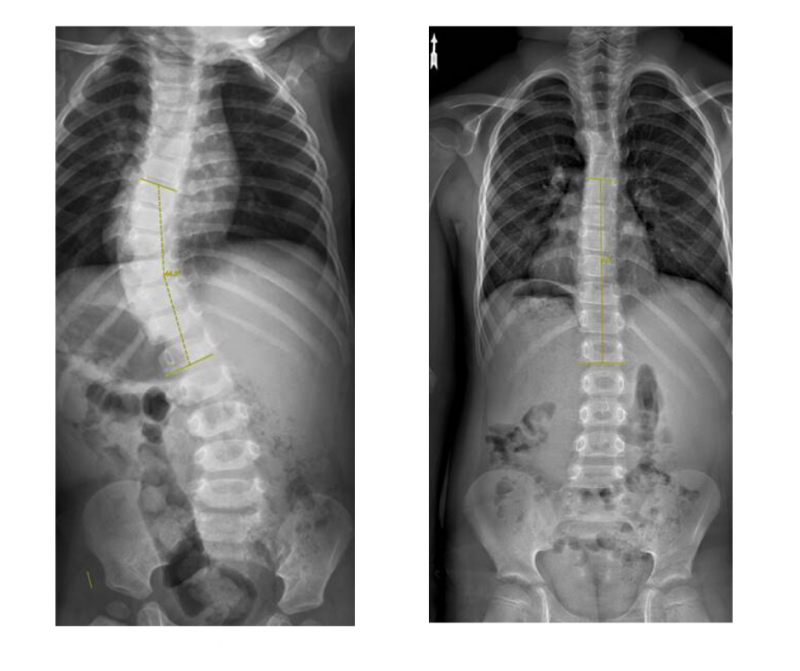
Max’s before X-ray (left) shows his 44 degree curve which was reduced to 5 degrees (shown right) following treatment with Mehta casting and bracing.
At an average of 5 years follow up, 53% of Akron Children’s patients have sustained curve correction less than 25 degrees, and 82% of patients have successfully avoided surgical intervention.
Dr. Ritzman says the spine team hasn’t encountered any significant complications of casting in patients. And, while there is a chance of Max’s scoliosis returning during his adolescent growth spurt, he feels the chances are slim.
Now a first grader at Roxbury Elementary in Solon, Max, who is a Cub Scout, enjoys camping, fishing, canoeing and downhill skiing. Although he has limited verbal skills due to Fragile X, Michelle says Max likes to sing and play Blink 182.
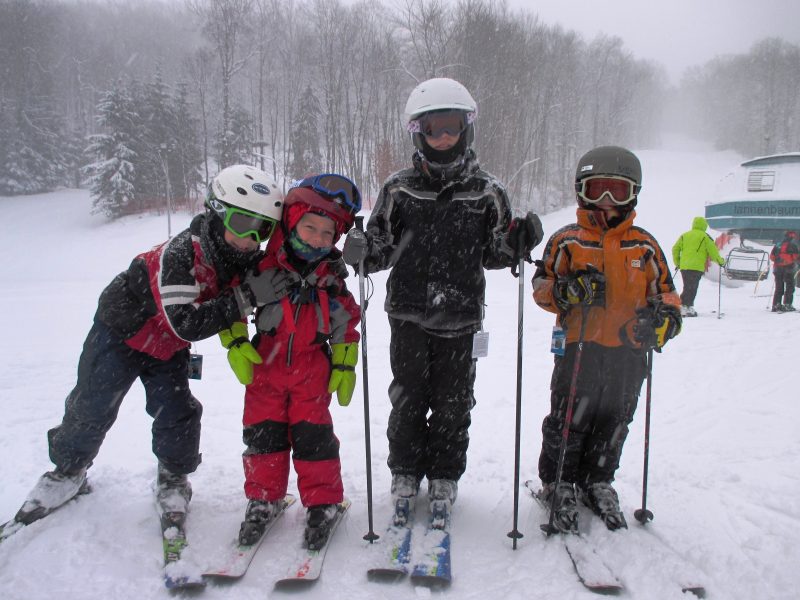
Max, an avid downhill skier, enjoys time on the slopes with his 3 big brothers.
“He’s always been a friendly and happy kid,” she said. “To see him back on the slopes at Holiday Valley you would never know what he endured as a baby. We are very thankful to the team at Akron Children’s. I always knew Max was in good hands.”
Explore the treatments offered at the Spine Center, an Akron Children’s Center of Excellence.










